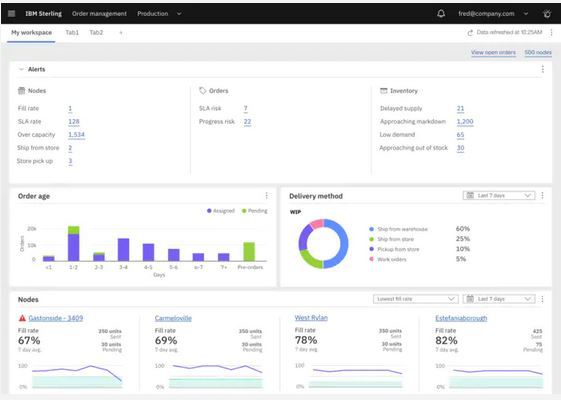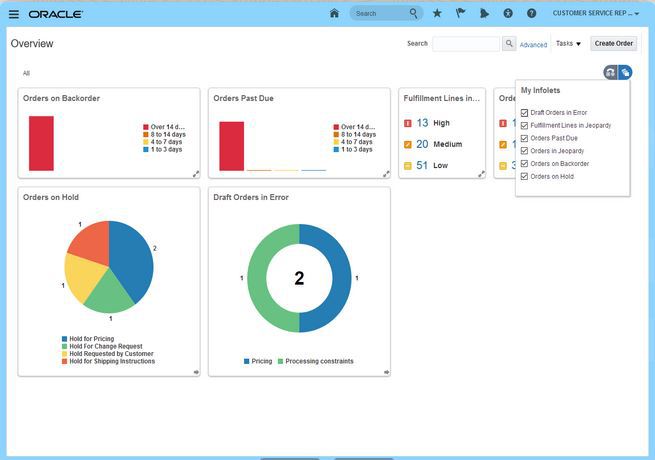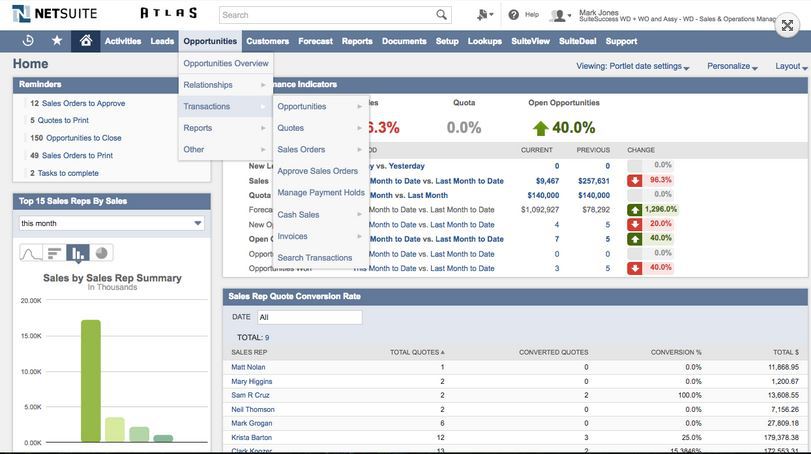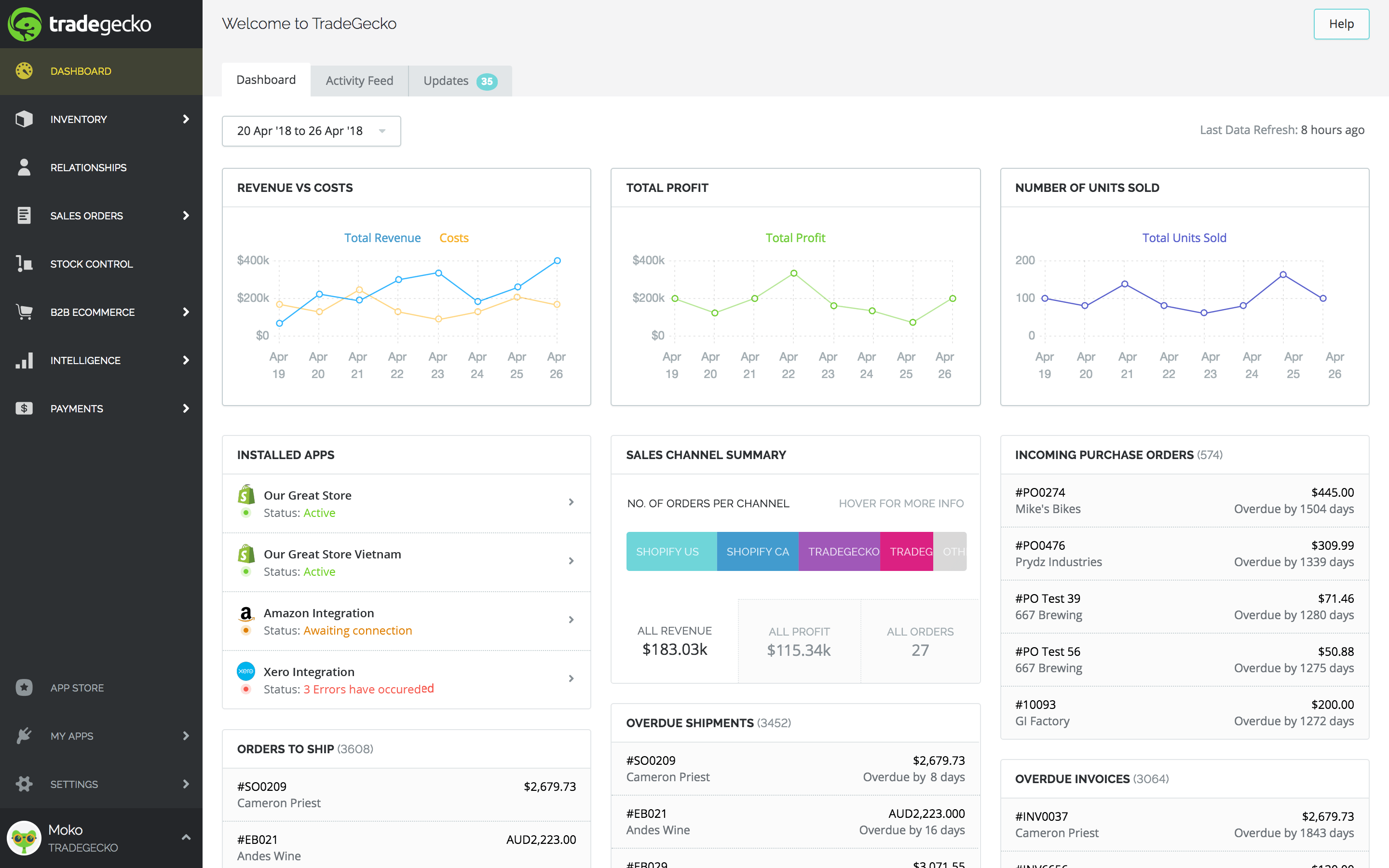On a good day, businesses around the world have to deal with an overwhelming number of order management processes. Maintaining a successful enterprise in this climate takes a lot more than just receiving orders and browsing through inventory management software and order management systems. Teams have to effectively work with their third-party (3PL) providers, handle a tangled web of shipping schedules, ensure that their inventory is properly synced up with their sales channels and that’s not even everything.
Compare Top Inventory Management Software Leaders

Luckily, in a world full of endless tasks, data entry and headache-inducing phone calls, a successful order management integration can take most of the pain out of your critical ordering and receiving processes. In this article, we’ll talk about what these systems are, how they can help your business and who the top players in the market are.
What is an Order Management System?
It can be tempting to hit Google and dive straight into the inventory management marketplace. However, if you don’t go in armed with everything these systems can, and should, do you could end up hurting your business more than helping it. If you’re a veteran of the order management system (OMS) game, you can probably skip down to our list of top suites on the market.
For those looking at their first or second system, stick around and let us give you the low down on what these systems do and how they can support your enterprise.
Multipurpose Power
Order management solutions do much more than just simplify tasks related to ordering. These powerful solutions affect your customers, sales channels, suppliers, processes and the list goes on. Don’t judge a book by its cover, even though order management is only one facet of e-commerce; these systems have far-reaching advantages.
Successful order management solutions should have the ability to influence and optimize several key processes. Here are some examples of things successful order management software should bring to the table:
- Real-time inventory data updates across vital channels
- Robust order tracking
- Overstock and stock-out prevention
- Forecasting tools
- Automatic order detail distribution
A Scaling Partner
If you’re running a business, odds are you want to grow. In the world of e-commerce, this means opening up new sales channels to reach a wider selection of buyers. Sounds simple right? You’ll have exponentially more data to keep up with as you tack on more and more channels. Before long, maintaining control over the velocity and amount of orders you are dealing with will become a dangerous bottleneck.
Not only are you bound to start mixing up orders and getting clients their products late, but the effects of this traffic jam don’t stop there. Issues will continue to cascade throughout the supply chain, negatively impacting everything from basic inventory management to employee stress. Deploying the right system that meets your requirements can head this issue off before it becomes a catastrophic problem.
Get our Inventory Management Software Requirements Template
Benefits
In 2019 consumers spent $601.75 billion online with US merchants. Not only that, but there were 2.05 billion people set to be online buyers in 2020. These numbers were set to rise, and that was before everyone entered various stages of lockdown and found that online shopping made social distancing guidelines easy to follow.
In uncertain times businesses need every advantage they can get. Here are some standout benefits that integrating an order management system can bring to your company:
- Inventory Oversight: Without an overhead view of your inventory and all of the processes within, there’s no guarantee that everything is running smoothly. Giving supervisors a bird’s eye view of processes helps them ensure that your clients are receiving their orders on time.
- Cost Cutting: Order management integration can often pay for itself by improving order accuracy. Spending less time and money on returns or incorrect orders opens up resources for more important tasks.
- Happier Clients: Simply providing a customer with a real-time update on where their order is and when it is expected to arrive can make all the difference. Not only that, but these systems make it easy for custom support representatives to find, view and resolve order issues.
- Automation and Efficiency: These systems automate tedious and human-error prone tasks to reduce costs and labor. Instead of interpreting and entering order information into the system, team members can focus on growth and supporting relationships with suppliers, clients and third-party partners.
- Valuable Analytics and Insights: Business intelligence, reporting and analytics can give stakeholders and supervisors all the information they need to optimize their processes. These features discover and measure the KPIs and metrics that separate successful businesses from struggling ones.
Interested in picking up an order management system now? If you’re chomping at the bit to get out into the marketplace, take a minute to do some soul searching before writing that check. All systems are not created equally, and signing up with the wrong vendor can set you back a staggering amount of resources.
Get our Inventory Management Software Requirements Template
System Selection
Adopting a new system is no small task, and ensuring that your new software meshes with your foundation is key to pulling off a successful integration. Ask yourself a few of the following questions and consult with everyone using the new system:
What does the system need to do?
We’ve covered how far-ranging the benefits of these systems are, but adopting one without a specific goal in mind can introduce needless complexity. To get the most out of your system, make a list of suffering processes and other pain points that a new system should correct.
Laying out your vulnerabilities will give prospective vendors the ability to show you how their product can give your business the support it needs and speed up the search for a system. You should also make a list of must-have features from your teams and managers. They’re going to be using the system and have experience with how your old solution did and didn’t work – they often have valuable insight into how a new system should help.
Will a new system affect your supplier or third-party provider relationships?
Many systems out there offer connections with supplier networks, but you want to make sure that your new system won’t leave any of your tried-and-true partners out in the cold. Order management software should take the complexity out of your supplier facing processes, not make them worse.
Take stock of any current 3PL providers you rely on and talk to them about your new system. If they’re helping you with any processes the new system is going to improve, they need to be brought up to speed.
Do you have support in place?
Depending on the deployment strategy, integrating a new system is a complex task that requires support from specialized teams. Smaller businesses may not have the IT resources needed for a difficult integration, so staying away from a solution that requires an expansive on-premise integration would be beneficial.
Take stock of your resources so that you don’t run into any snags that drag the integration time table out for too long. Stumbling into a catastrophic error in your new system without the backup to handle it has dire consequences.
Best Order Management Software Systems
Now that we’ve gotten the why’s and how’s out of the way, let’s jump into our SelectHub analyst-curated list of the top five products on the market:
Compare Top Inventory Management Software Leaders
IBM Sterling Order Management
This order management system is available to businesses of all sizes through SaaS, on-premise and hybrid-cloud deployment strategies. It gives users the tools to adapt to changing market conditions and make changes to their processes to account for demand.

IBM Sterling Order Management helps users manage their order information, inventory management processes, scheduling, order fulfillment and after-sales services. It also lets users change the order availability of their stores, divert orders to better locations and reserve inventory for special circumstances. This system is available on Windows and Linux based systems.
Here are some more standout features and benefits of this system:
Standout Benefits & Features:
- Distributed Order Management: IBM Sterling’s distributed order management solution uses an intelligent sourcing engine that manages, monitors and coordinates order fulfillment. User-defined business requirements create the foundation for order fulfillment processes across extended supply chains. Trading partners, customers, suppliers and channels can modify, track, cancel and monitor the order lifecycle in real time. Alerts can be set up to notify users of supply issues to head off before they become larger problems.
- Inventory Monitoring: This system gives users real-time visibility into vital order indicators like low, limited, back ordered, pre-ordered and in stock for their products. Users can leverage three different real-time inventory monitoring modes, including activity-based, quick-sync and full-sync.
- Logistics Management: Users can streamline their inbound and outbound processes with IBM Sterling’s logistics management features. It accepts, stores and manages the execution of delivery plans while monitoring for and notifying users of deviations. It also helps coordinate with customers so that a product is shipped when and how the client wants. Delivery records are tied to original sales and purchase orders so that users can manage dependencies easier. Businesses can set conditions for how shipments are consolidated, loads are created and routes are set for an enterprise or buyer organization.
- Modernized Architecture: IBM Sterling Order Management is based on Docker containers that can be switched in and out as needed. Users can scale single instances of a single capability to keep up with peak periods of demand.
- Additional Pricing Support: An optional Pricing Service add-on is available for licensing that lets users define price lists, maintain product prices, define quantity tiers and assign price lists directly or indirectly through attributes to customers. Users can model item prices, promotions and orders while leveraging price lists to manage product values.
- Sterling Configurator: This add-on can be integrated into the order management system and can help configure product rules to meet customer demand. Licensing this module allows it to work in conjunction with the Sterling Call Center and Store features.
Compare Costs with our Inventory Management Software Pricing Guide
Now that we’ve covered the strengths, here are some weaknesses of the system:
Product Limitations:
- IBM Sterling Call Center Business Intelligence Operational Reports and Store Business Intelligence Operational Reports are not supported in a sharded environment.
- Newer toolsets aren’t retroactively compatible with older versions of this system.
- If the included inventory management application is installed stores will be configured as Sterling order management nodes and uploaded without a location. This also makes inventory, cycle count, physical count and receiving tasks unavailable.
Platform:
Company Size Suitability: S M L
Oracle Order Management Cloud
Oracle’s cloud-based order management system supports medium to large businesses in the communications, automotive, healthcare, technology, retail, manufacturing and industrial industries.

It’s available for Windows and Mac operating systems and supports a number of order management features, including order validation, importing, targeted pricing and visibility tools.
Here are some of the top features of the product:
Standout Benefits & Features:
- Multi-Channel Order Management: Oracle Order Management Cloud supports order management through multiple fulfillment and order capture systems. Users can import or directly enter for compliance validation with the capture feature. Included fulfillment features can then synchronize orders across multiple systems while receiving status updates.
- Business Rules: Users can leverage automation through configurable business rules to optimize their processes. Quickly fill out shipping, billing, pricing and order validation information without tedious manual entry. It also supports pricing execution with included discounting rules, targeted pricing, tax calculation integration and tiered pricing features.
- Flexible Architecture: Oracle Order Management Cloud lets users define, implement and maintain their fulfillment orchestration policies with included pre-built tools. It supports the definition of order change logic within the process. Users can set up alerts at each stage of the order process to keep them up-to-date on any delays or issues. Streamlined approval workflows keep order creation and changes in-line with policy.
- Real-Time Pricing Updates: As users are configuring their products, the prices for items are displayed within the interface for ease of access. A running total is kept as options are selected with a real-time summary of individual items.
- Oracle Product Hub Cloud Access: This feature gives users a definitive master product record that supports cross-channel commerce, regulatory compliance, supply chain execution and new product introductions. Users can synchronize and manage their product data across hybrid cloud deployments. Products can be onboarded from internal and external systems. These items can also be categorized by product taxonomy and more. The Product Hub Cloud also contains workflow and revision management tools.
Compare Costs with our Inventory Management Software Pricing Guide
Now that we’ve covered the strengths, here are some weaknesses of the system:
Product Limitations:
- There are substitution restrictions that do not support drop-ship, internal and back-to-back orders. Lines that have split quantities are also not able to be substituted.
- This system only supports automatic item substitutions through Oracle Global Order Promising. This system provides substitution recommendations during the scheduling and post-booking phases.
- Delivery based invoicing is not available for order lines in different operating units.
- It does not support over and under shipment tolerances for assemble to order (ATO) items. Pick to order (PTO) shipment tolerance updates are not allowed.
Platform:
Company Size Suitability: S M L
Oracle NetSuite ERP Order Management
Oracle’s second mention on this list fits with medium-sized businesses in nonprofit, retail, wholesale, manufacturing and distribution industries. It supports a cloud-based deployment strategy and is compatible with Windows, Mac and Linux devices.

This suite natively unifies e-commerce, POS, inventory and order management, marketing, merchandising, customer service and more.
Here are some of Oracle’s NetSuite ERP order management strengths:
Standout Benefits & Features:
-
- Omnichannel Platform: This system includes a unified platform for inventory management that spans warehouses, third-party locations, stores and drop-ship locations. It can manage available-to-promise (ATP) inventory and commitments across all channels while linking commerce to the supply chain. It helps users accelerate their inventory management processes with inventory planning, replenishment and warehouse management features.
- Automated Order Management: Oracle’s NetSuite ERP order management solution automates and manages the entire order process lifecycle. This includes order capture and validation, shipment confirmation, order releases, customer communication and settlements. It also supports split shipments, drop shipping, product personalization, continuity programs and digital fulfillment.
- Order Fulfillment Execution: This system supports digital fulfillment processes to execute orders using advanced pick, pack and ship features while integrating with shipping providers. Its intelligent order allocation inclusions use global inventory visibility and business rules decide how to proceed with order fulfillment. Administrative users can configure automatic location assignments to dynamically apply fulfillment strategies and reduce costs.
- Analytics Features: Insightful analytics tools can identify growth areas and processes that need improvement. Users can monitor and scale their fulfillment operations with features like dashboards, reports and exception queues. It uses KPIs to measure metrics like sell-through percentage, stock-to-sales ratio, days of supply, gross margin ROI and more.
SuiteApps, created by third-party developers, contains extensions and additions for industries like manufacturing, nonprofit, software, retail, e-commerce and service. It also includes business extensions for finance, tax, HR and customer support.
Compare Costs with our Inventory Management Software Pricing Guide
Product Limitations:
- Standard reporting features are included, but advanced options are only available through the purchase of a separate analytics solution.
- Reports with more than 30 columns cannot be exported as PDFs. Items with more than 10 columns are automatically truncated to a limited number of rows. Documents with a large number of rows are vulnerable to formatting issues.
- The inbound shipping details feature doesn’t support assembly items and work orders. Items can only be received when the inbound shipment status is set to in-transit or partially received.
- Line-item discounts can’t be viewed when NetSuite Suite Promotions are used in commerce and site-building web stores.
Platform:
Company Size Suitability: S M L
QuickBooks Commerce
QuickBooks Commerce is designed for small to medium-sized businesses and offers a browser-based SaaS deployment strategy. Windows, Linux and Mac devices are supported and it serves manufacturing, wholesale, distribution, e-commerce and retail industries.

It contains robust inventory and order management systems. It also supports warehouse management, sales quote and order creation, stock monitoring, price list management and more.
Take a look at some of the major features and benefits of this suite:
Standout Benefits and Features:
- Inventory Control: QuickBooks Commerce’s inventory control features display a complete list of products that includes stock on hand (by location), committed stock amounts per location, inventory costs, moving average cost (MAC), stock histories, SKU codes, barcodes, supplier codes and product weights. Stock-on-hand values are updated as sales orders are fulfilled, or as purchased orders are marked as received.
- Warehouse Management: This feature supports the movement of inventory within one or several warehousing locations. Users can create stock transfer documents to shift items between warehouses, specify warehouses to receive certain products from purchase orders and restrict product information based on team-member allowances.
- Multichannel Sales: QuickBooks Commerce leverages a central hub to manage orders, inventory and product information from all sales channels. These channels automatically sync with the central repository of inventory data. Users can also upload product details to QuickBooks Commerce for them to be automatically pushed to all sales channels.
- B2B eCommerce Portal: This suite gives users a customizable private sales URL for bulk sales to wholesalers. The B2B portal lets businesses create custom price lists, white-label for branding, advertise featured products and discounts and accept credit card payments.
- Native iOS App: The included iOS app lets users manage products, orders and customers on-the-go. It provides a mobile-optimized product catalog, barcode scanning support, access to customer data, order creation and management, sales data, map views and a camera to capture and upload product information.
Compare Costs with our Inventory Management Software Pricing Guide
Product Limitations:
- There is no native app for Android devices.
- Bulk orders can’t receive automatic price reductions when using the B2B e-commerce store.
Platform:
Company Size Suitability: S M L
Magento Commerce Order Management
Magento’s order management software is a SaaS-based solution built for small to medium-sized operations. This system serves multiple industries, including food and beverage, health and beauty, fashion and automotive. It supports Windows, Mac and Linux based systems.

It can assist users with managing orders from multiple channels, global inventory management and organization, centralized order processing and business intelligence.
Standout Benefits and Features:
- Inventory and Sourcing: Magento’s order management suite gives users control over their global inventory and uses configurable sourcing rules to help determine the best location for products. This feature also supports multi-source inventory views, intelligent sourcing, real-time adjustments to boost stock accuracy, safety stock management, inventory aggregation by channel and more.
- Centralized Customer Service: This system centralizes order information from all sales channels and fulfillment centers to better support product returns and order processing. Users can also track orders, modify custom product attributes, automate refunding, integrate customer service tools and create, modify and cancel returns.
- Amazon Sales Channel: Users can leverage Amazon sales channel extensions to connect Magento instances directly to US, Canadian, Mexican and UK Amazon marketplaces. Product catalogs can also continuously sync with a business’s Amazon store. An included order grid helps users view and manage their Amazon orders, build customer profiles, and control shipping options. It can also offer B2B volume-tiered pricing options and discounts for other businesses.
- Free eCommerce Platform: Magento Open Source is a free, self-hosted e-commerce platform developed for small businesses. It contains order management features like integrated checkouts, payment and shipping support, optimized shopping for mobile devices, global selling, catalog management and extended functionality through a marketplace app.
- Business Intelligence: Magento’s order management solution integrates with its business intelligence features for actionable insights into customer, order and inventory data. Users can also create custom dashboards, gain insight into KPIs and leverage out-of-the-box reports for increased visibility.
Compare Costs with our Inventory Management Software Pricing Guide
Product Limitations:
- There is little visibility into home deliveries. There are only notifications of the item being delivered or declined.
- There are no native iOS or Android apps. The Magento marketplace offers third-party app builders at an additional cost.
Platform:
Company Size Suitability: S M L
Final Thoughts
Armed with all of the above information, you’re on the right path toward selecting and implementing a successful order management system. As long as you take your time and do some soul searching about how and what a new system needs to improve, you’ll avoid costly mistakes down the road.
How has finding and integrating order management software helped or hurt your operations? Let us know with a comment below!
Analyst-Picked Related Content
Pricing Guide: Discover the true cost of Inventory Management software
Comparison Report: An Interactive analyst report with comparison ratings, reviews and pricing

1 comment
Join the conversationGeorge Devin - November 6, 2020
Order management refers to the process of receiving, tracking, and fulfilling customer orders. The order management process begins when an order is placed, and ends when the customer receives their package. Thanks for providing top software solutions for order management.